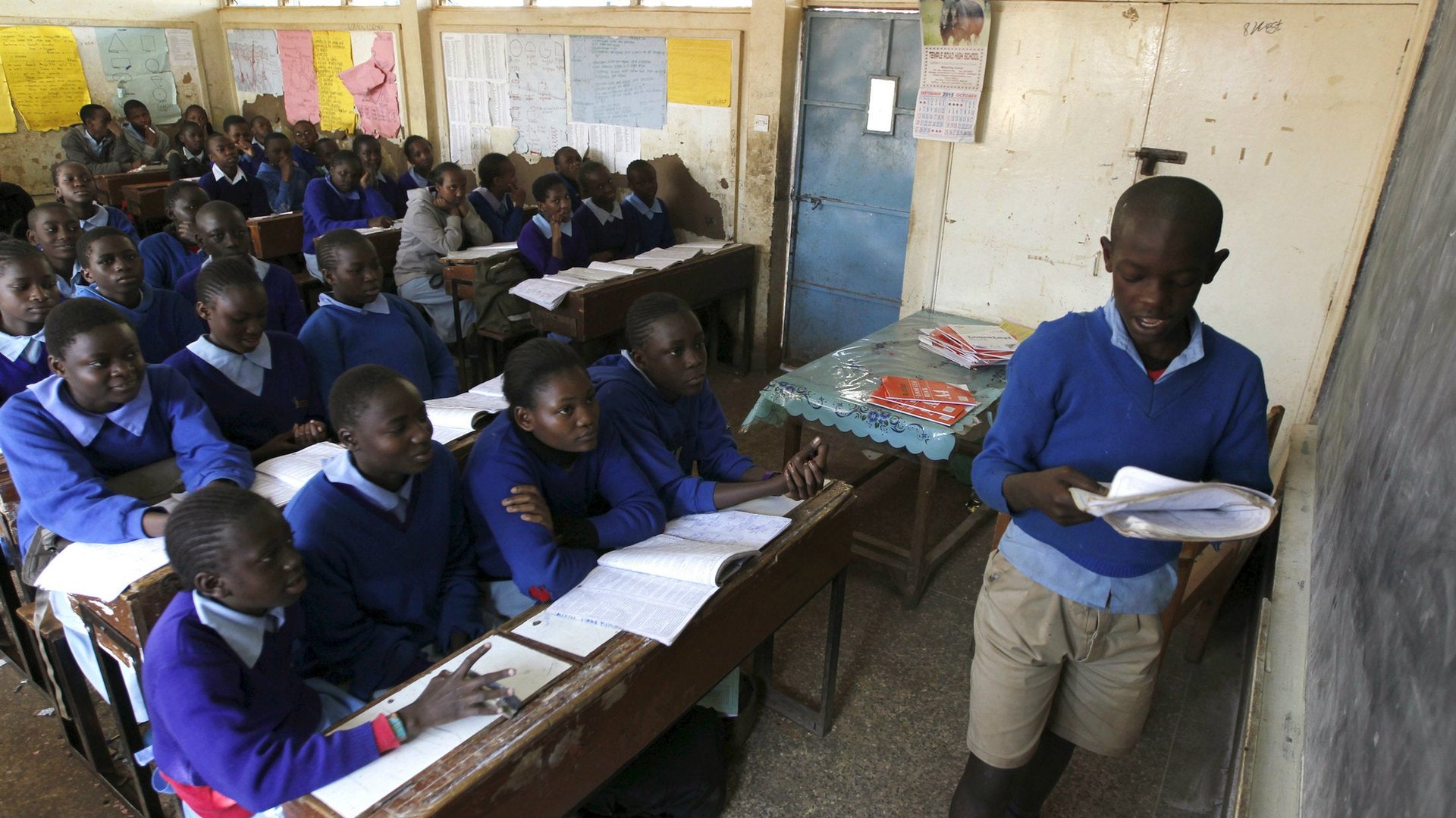Kenya’s free education system is making inequality worse
There is a new brand of educational entrepreneur emerging in Nairobi’s slums: privately owned and run schools that promise particularly poor children a good education at little cost.


There is a new brand of educational entrepreneur emerging in Nairobi’s slums: privately owned and run schools that promise particularly poor children a good education at little cost.
These schools position themselves as providing a public good. But the majority are not registered with Kenya’s Ministry of Education, Science and Technology. This means they miss out on the country’s free education grants—and, because of this, perpetuate a major social injustice in the Kenyan capital.
A word here about the structure of Kenya’s education system. At primary school level there are public or government schools. These tend to be regarded with suspicion by ordinary Kenyans, who question the quality of their teaching. Most are in more developed areas rather than in slums, which are largely served by low-fee private schools. There are also private schools in wealthy areas, but they charge higher fees.
Similar structures exist at secondary level. But there is tough competition for places in public secondary schools, which are far better regarded than their primary school counterparts.
Research by the Africa Population and Health Research Centre has shown that over 60% (pdf) of Nairobi’s more than half a million children attend these low-fee private schools. These children, aged between five and 14, come from households that live on less than US$1 a day. Their families struggle to put food on the table.
It is these obviously needy people who do not benefit at all from the Kenyan government’s free primary and secondary education policies.
A policy that doesn’t help the poor
Under the primary school policy, grants are drawn from tax dollars and then distributed directly to all government primary schools. Every child who attends one of these schools is allocated 1,420 Kenyan shillings (about US$14) a year.
Many parents living in the slums see education as a way for their children to climb out of poverty. There are very few government schools in Nairobi’s slums, and parents do not trust them to provide a quality education. The schools also don’t offer adequate services for pre-primary children, which is hard for parents who want to spend their days looking for work.
So they send their children to low-fee private schools, which are well regarded and offer better pre-primary services.
People set up private schools for reasons of faith, philanthropy, or profit. While there are many groups with good intentions, the profiteers are the most callous of all. They promise low school fees, quality education, flexibility in payments and good teachers. They attract international investors who naturally mistrust any African government and put their faith in such methods as privatization.
Do these schools deliver? It is difficult to tell, because they operate in such a closed manner that barely any data is available about them. However, available research shows that their pupils tend to perform better than those from government schools in the slums. It is not clear whether this is because children are drilled to perform or if it is the result of quality teaching.
Meanwhile, those in the country’s middle and elite classes send their children to public primary schools—and benefit from the free primary or secondary education funds.
The problem here is not with the rich receiving subsidies. They are absolutely entitled to this government support. But these subsidies have become just another marker of inequality between the poor living in urban slums and their wealthier counterparts.
A widening chasm
This social injustice is worsened by Kenya’s system of admissions to sought-after public secondary schools. They are better regarded than private secondary schools. The admissions system is run on a quota basis: All private primary schools are allocated just one of every four places available in public secondary schools.
Children from slums like Korogocho and Viwandani who have attended low-fee private primary schools are put in the same admissions category as children from better-off communities—Muthaiga, Runda, Kilimani, Lavington—who attend the high-cost private schools found in upmarket estates.
The poorer children are at an immediate disadvantage and stand less chance of getting into good public secondary schools than their better-educated counterparts. This is another contribution to inequality. It keeps poorer children out of good schools, which denies them the chance to benefit from the free secondary education and superior teaching in public government secondary schools.
Possible solutions
There are several ways in which Kenya’s government can make the system more equitable. First, the Ministry of Education, Science and Technology must include low-fee private schools on its watch.
It does not matter whether the schools are registered with the ministry or not: It is prudent to know what is going on in their classrooms and to make sure Kenyans know which institutions are good and which are merely exploitative.
Second, the ministry must provide free education subsidies. If the schools themselves do not earn or deserve these subsidies, they must be given directly to poor children and their families instead.
The free primary education policy has been in place for more than a decade. There is no reason that the poor should be excluded from accessing subsidies. If the state persists with such exclusion, it is guilty of breeding a generation of people who feel discriminated against by their own government.
This article was originally published on The Conversation. Read the original article.